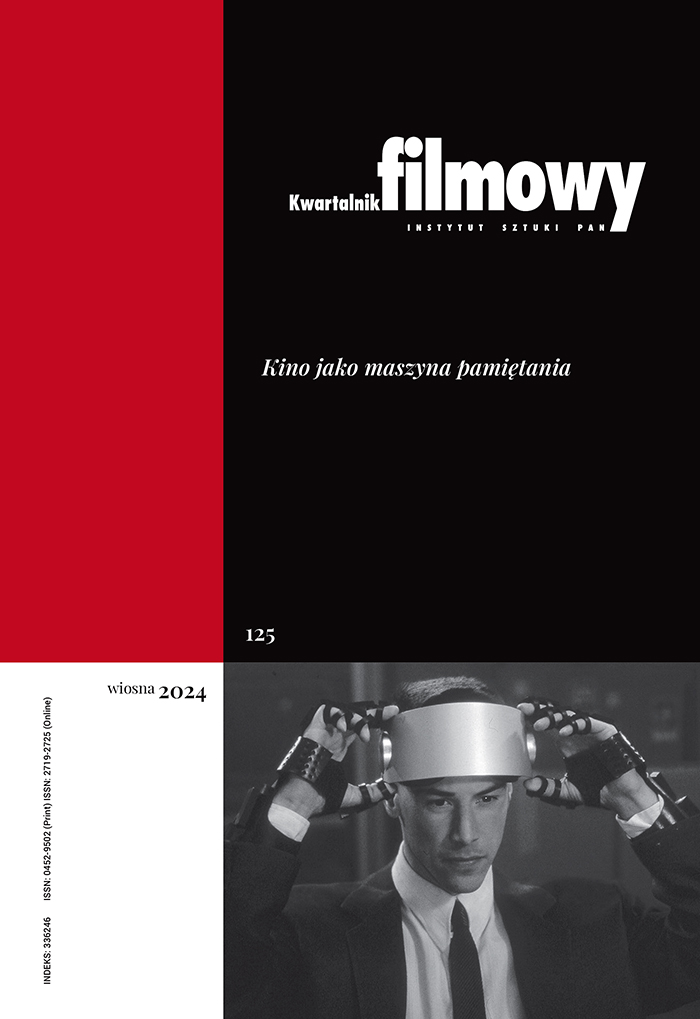Baroque and Anarchy: The Faces of Multiculturalism in the New Mexican Cinema
Abstract
Contemporary Mexico is a place where diversity is inscribed in the collective character of the nation, and miscegenation - both in its narrow and broad sense - is a major factor in the nation-building process. The trophies and wounds of the complex Mexican culture have inspired filmmakers to probe their own soul. Filmmakers born in the 1970s and 1980s such as Carlos Reygadas, Amat Escalante, Fernando Eimbcke or Michael Rowe reach for the minimalist poetic of neomodernism. Although they do not form a homogeneous school, they take up similar topics, and reinterpret the myths that have overgrown history, religion, gender and social relations. The article might be considered to be a starting point for further research and open discussion on the phenomenon of collective non-monolithic identity. The purpose of this article is to show the complexity of the mestizo national soul and the demonstration of the national, that is community dedicated, character of the new wave cinema.
Keywords:
Mexican cinema, neomodernism, national identityReferences
Acevedo-Muñoz, Ernesto. R. 2003. Buñuel and Mexico: The Crisis of National Cinema. Berkeley: University of California Press.
DOI: https://doi.org/10.1525/9780520930483
Google Scholar
Bachtin, Michaił. 1970. Problemy poetyki Dostojewskiego. Tłum. N. Modzelewska. Warszawa: PIW.
Google Scholar
Bird, Michael. 2007. Religion in Film. W: J. Mitchell, S. Brent Plate (red.). The Religion and Film Reader. London - New York: Routledge.
Google Scholar
Fuentes, Carlos. 1994. Pogrzebane zwierciadło. Tłum. E. Klekot. Łódź: Wydawnictwo Opus.
Google Scholar
Hayward, Susan. 2005. French National Cinema. New York: Routledge.
Google Scholar
Hummel, Agata, Urszula Ługowska. 2009. Ameryka indiańska. W: Dzieje kultury latynoamerykańskiej. Warszawa: Wydawnictwo Naukowe PWN.
Google Scholar
Lipińska, Urszula. 2012. Nowa fala z Meksyku. Poza strefą bezpieczeństwa. „Kino” nr 6.
Google Scholar
Majmurek, Jakub. 2012. Widma rewolucji. W: Katalog 12. Międzynarodowego Festiwalu Filmowego T-Mobile Nowe Horyzonty, Wrocław.
Google Scholar
Oberda-Monkiewicz, Anita. 2009. Ameryka kreolska i metyska. W: M. F. Gawrycki (red.) Dzieje kultury latynoamerykańskiej. Warszawa: Wydawnictwo Naukowe PWN.
Google Scholar
Paz, Octavio. 1991. Labirynt samotności. Tłum. J. Zych. Kraków: Wydawnictwo Literackie.
Google Scholar
Rulfo, Juan. 1988. Po śmierci. Tłum. K. Rodowska. „Literatura na Świecie” nr 5.
Google Scholar
Authors
Ewa Szponarkwartalnik.filmowy@ispan.pl
Jagiellonian University Poland
Absolwentka Międzywydziałowych Indywidualnych Studiów Humanistycznych oraz filmoznawstwa na Uniwersytecie Jagiellońskim. Obecnie pracuje nad doktoratem poświęconym kinowym wizerunkom prostytutki. Publikuje w czasopismach naukowych i popularnych.
Statistics
Abstract views: 134PDF downloads: 36
License
Copyright (c) 2012 Ewa Szponar

This work is licensed under a Creative Commons Attribution 4.0 International License.
The author grants the publisher a royalty-free non-exclusive licence (CC BY 4.0) to use the article in Kwartalnik Filmowy, retains full copyright, and agrees to identify the work as first having been published in Kwartalnik Filmowy should it be published or used again (download licence agreement). The journal is published under the CC BY 4.0 licence. By submitting an article, the author agrees to make it available under this licence.
In issues from 105-106 (2019) to 119 (2022) all articles were published under the CC BY-NC-ND 4.0 licence. During this period the authors granted a royalty-free non-exclusive licence (CC BY-ND 4.0) to use their article in „Kwartalnik Filmowy”, retained full copyright, and agreed to identify the work as first having been published in our journal should it be published or used again.
Most read articles by the same author(s)
- Ewa Szponar, Transgressive Sensitivity of François Ozon , Kwartalnik Filmowy: No. 101-102 (2018): European Cinema of 21st Century
- Ewa Szponar, Urszula Antoniak: The Condition of the Nomad , Kwartalnik Filmowy: No. 95 (2016): Transnational Dimension of Polish Cinema











